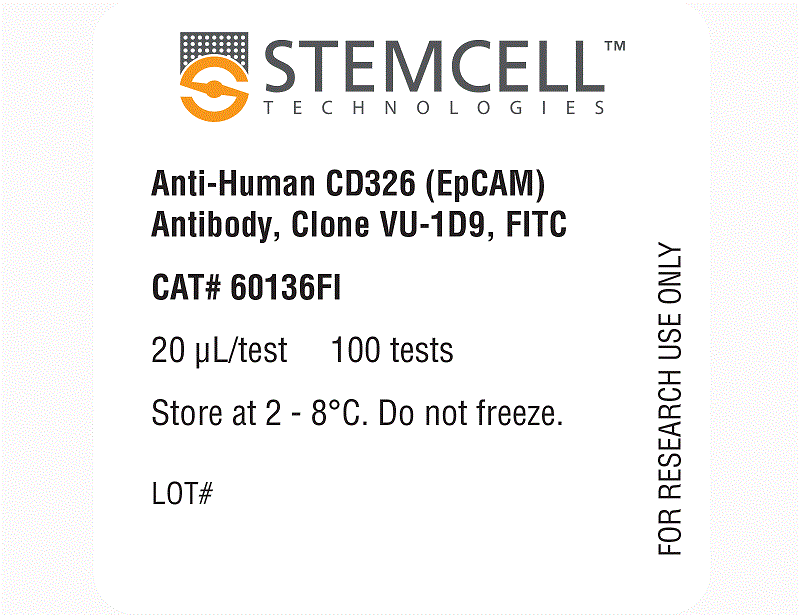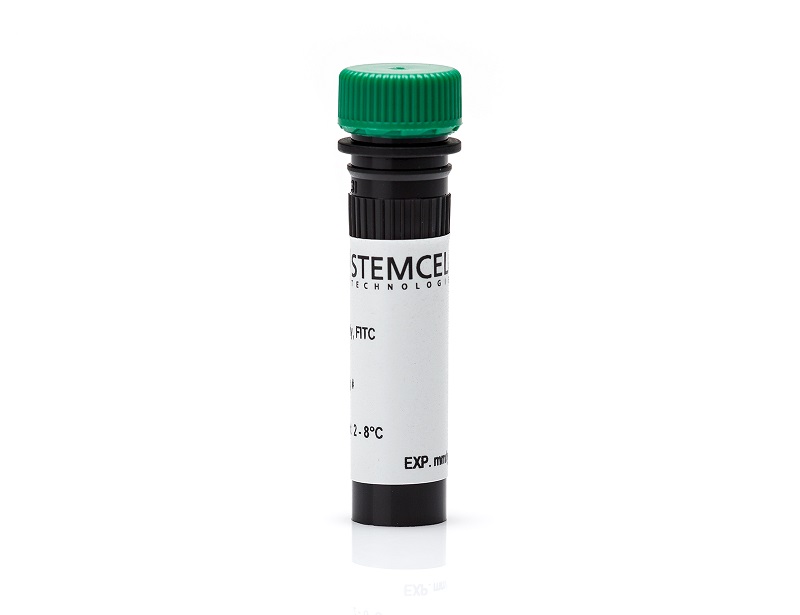概要
技术资料
| Document Type | 产品名称 | Catalog # | Lot # | 语言 |
|---|---|---|---|---|
| Product Information Sheet | Anti-Human CD326 (EpCAM) Antibody, Clone VU-1D9 | 60136 | All | English |
| Product Information Sheet | Anti-Human CD326 (EpCAM) Antibody, Clone VU-1D9, FITC | 60136FI | All | English |
| Safety Data Sheet 1 | Anti-Human CD326 (EpCAM) Antibody, Clone VU-1D9 | 60136 | All | English |
| Safety Data Sheet 2 | Anti-Human CD326 (EpCAM) Antibody, Clone VU-1D9 | 60136 | All | English |
| Safety Data Sheet | Anti-Human CD326 (EpCAM) Antibody, Clone VU-1D9, FITC | 60136FI | All | English |
数据及文献
Data

Figure 1. Data for Unconjugated
Flow cytometry analysis of human MCF7 cells labeled with Anti-Human CD326 (EpCAM) Antibody, Clone VU-1D9, followed by a rat anti-mouse IgG1 antibody, FITC (filled histogram) or a mouse IgG1, kappa isotype control antibody, followed by a rat anti-mouse IgG1 antibody, FITC (solid line histogram).

Figure 2. Data for FITC-conjugated
(A) Flow cytometry analysis of human embryonic stem (ES) cells labeled with Anti-Human CD326 (EpCAM) Antibody, Clone VU-1D9, FITC (filled histogram) or a mouse IgG1, kappa FITC isotype control antibody (solid line histogram).
(B) Flow cytometry analysis of human MCF7 cells labeled with Anti-Human CD326 (EpCAM) Antibody, Clone VU-1D9, FITC (filled histogram) or Mouse IgG1, kappa Isotype Control Antibody, Clone MOPC-21, FITC (Catalog #60070FI; solid line histogram).

 网站首页
网站首页





